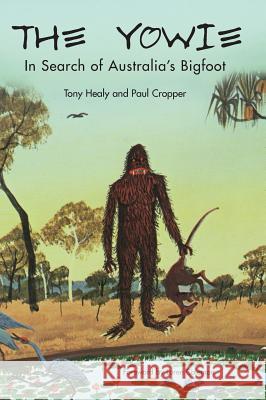The Yowie: In Search of Australia's Bigfoot » książka
The Yowie: In Search of Australia's Bigfoot
ISBN-13: 9781938398469 / Angielski / Twarda / 2015 / 336 str.
The Yowie: In Search of Australia's Bigfoot
ISBN-13: 9781938398469 / Angielski / Twarda / 2015 / 336 str.
(netto: 150,64 VAT: 5%)
Najniższa cena z 30 dni: 156,87
ok. 16-18 dni roboczych.
Darmowa dostawa!
During the early colonial era, Australia's Aborigines often warned British settlers to beware of huge, ape-like creatures that lurked in the rugged mountains and deep forests of the island continent. Their people, they said, had been encountering the hairy horrors since time immemorial. They knew them by many names, including doolagarl, thoolagarl, jurrawarra, and tjangara.
Soon the colonists, too, began to experience hair-raising encounters with the hulking, foul-smelling creatures, which they referred to as "Australian apes," "yahoos" or "youries." Today, they are generally referred to as yowies. The list of modern-day eyewitnesses includes zoologists, rangers, surveyors and members of the elite Special Air Service Regiment.
This book chronicles the yowie saga from the pre-colonial era to the present day. It contains over 300 carefully documented eyewitness reports and a vast amount of other data, much of which suggests that the damnably elusive creatures really do exist. The authors also critically examine the many theories that have been put forward to explain - or explain away - Australia's most baffling zoological mystery.
PAUL CROPPER became fascinated by the yowie mystery in 1976, when he uncovered several long- forgotten eyewitness reports in colonial-era newspapers. Although then only 14 years old, he began visiting the Blue Mountains, to the west of his home in Sydney, searching for proof of the creatures' existence.
Canberra-based TONY HEALY, who had already become intrigued by the bigfoot/sasquatch phenomenon while working in Canada in 1969, also became involved in yowie research in the mid-1970s.
Since 1981 they have collaborated on many projects, notably in co-authoring Out of the Shadows: Mystery Animals of Australia, which contained a lengthy chapter about the elusive yowie. Over the past 30 years they have searched for lake monsters, hairy giants, out-of-place big cats and other semi-legendary animals in Fiji, North America, the Bahamas, Iceland, Ireland, Great Britain, Nepal, Malaysia and in every state and territory of Australia."
During the early colonial era, Australias Aborigines often warned British settlers to beware of huge, ape-like creatures that lurked in the rugged mountains and deep forests of the island continent. Their people, they said, had been encountering the hairy horrors since time immemorial. They knew them by many names, including doolagarl, thoolagarl, jurrawarra, and tjangara. Soon the colonists, too, began to experience hair-raising encounters with the hulking, foul-smelling creatures, which they referred to as "Australian apes," "yahoos" or "youries." Today, they are generally referred to as yowies. The list of modern-day eyewitnesses includes zoologists, rangers, surveyors and members of the elite Special Air Service Regiment. This book chronicles the yowie saga from the pre-colonial era to the present day. It contains over 300 carefully documented eyewitness reports and a vast amount of other data, much of which suggests that the damnably elusive creatures really do exist. The authors also critically examine the many theories that have been put forward to explain - or explain away - Australias most baffling zoological mystery.PAUL CROPPER became fascinated by the yowie mystery in 1976, when he uncovered several long- forgotten eyewitness reports in colonial-era newspapers. Although then only 14 years old, he began visiting the Blue Mountains, to the west of his home in Sydney, searching for proof of the creatures existence. Canberra-based TONY HEALY, who had already become intrigued by the bigfoot/sasquatch phenomenon while working in Canada in 1969, also became involved in yowie research in the mid-1970s. Since 1981 they have collaborated on many projects, notably in co-authoring Out of the Shadows: Mystery Animals of Australia, which contained a lengthy chapter about the elusive yowie. Over the past 30 years they have searched for lake monsters, hairy giants, out-of-place big cats and other semi-legendary animals in Fiji, North America, the Bahamas, Iceland, Ireland, Great Britain, Nepal, Malaysia and in every state and territory of Australia.











